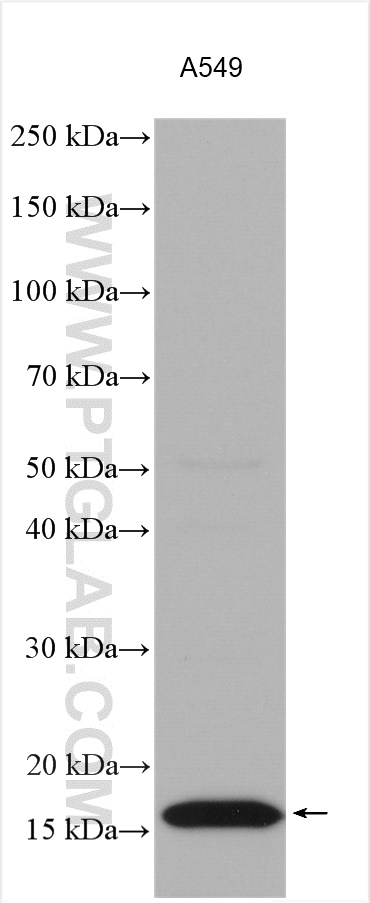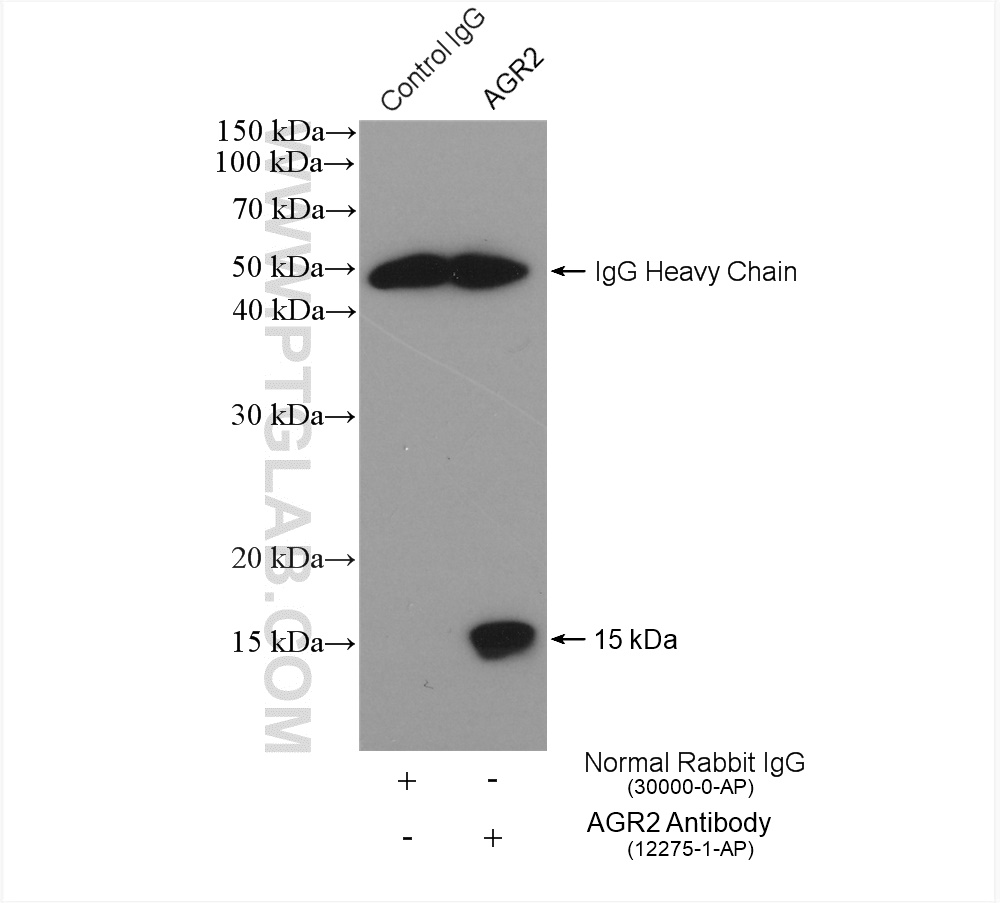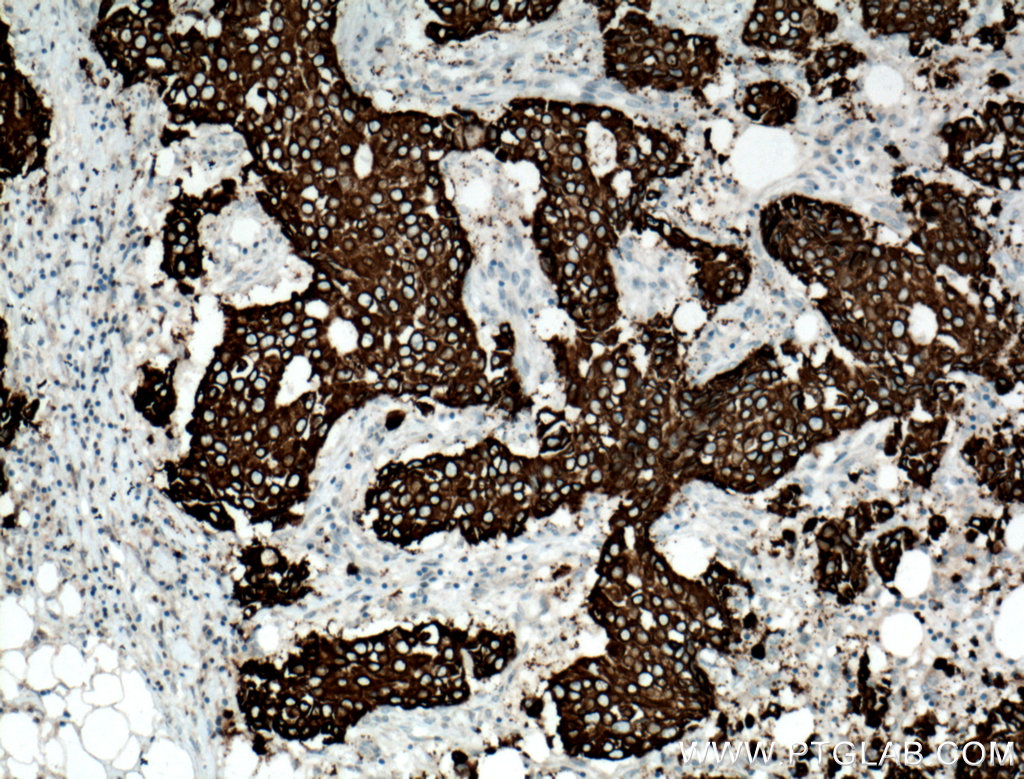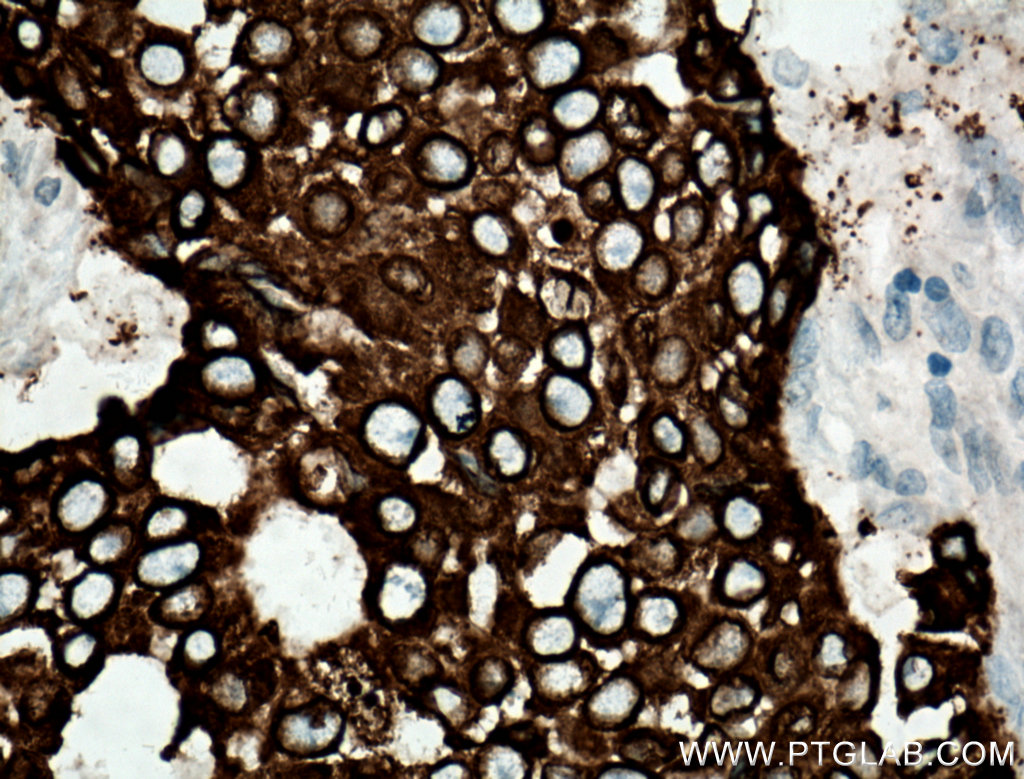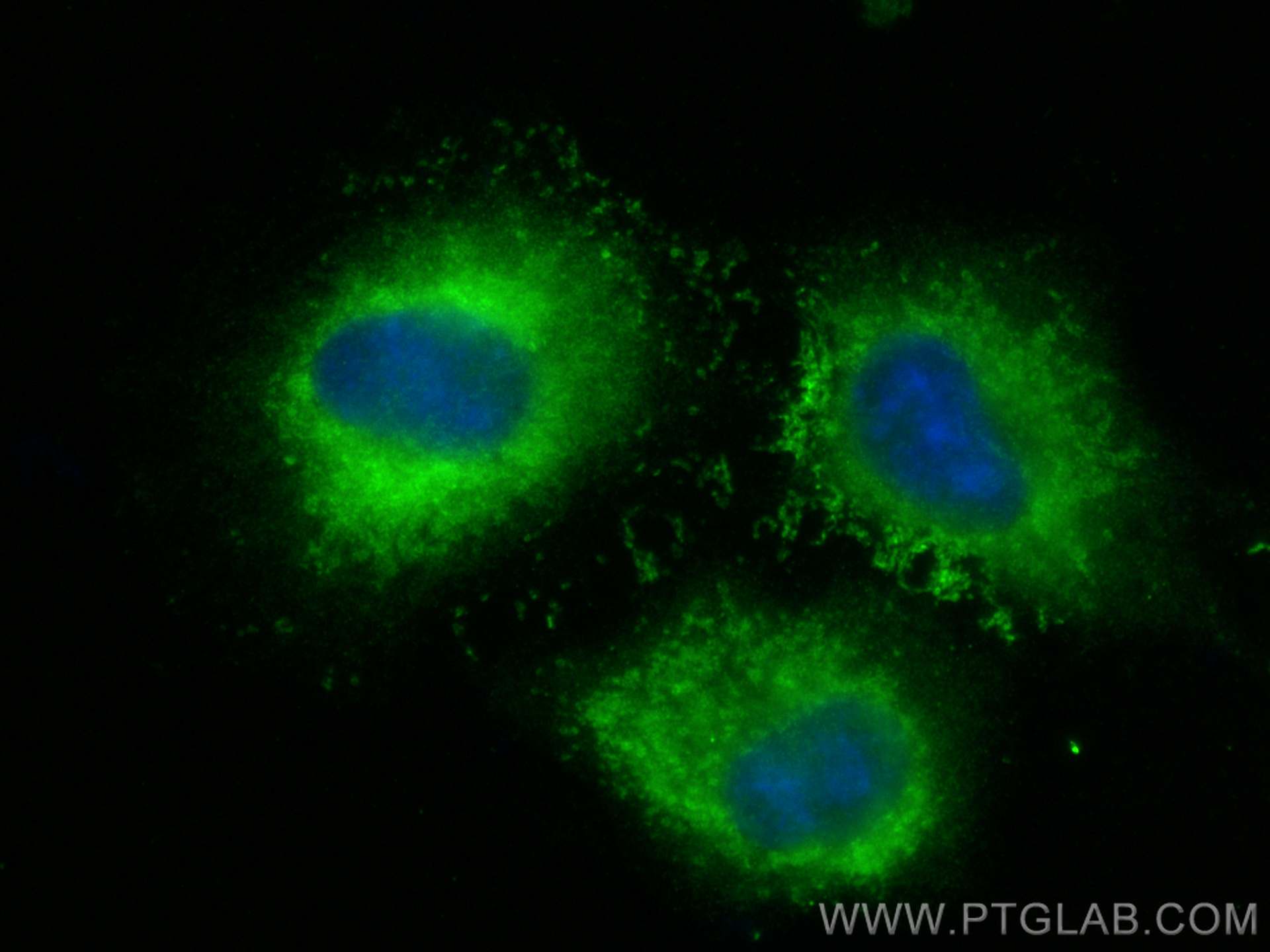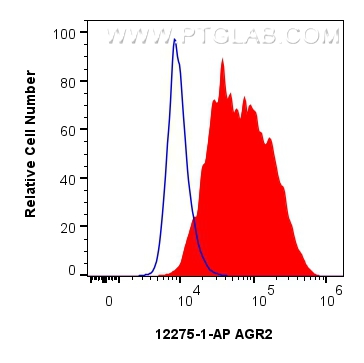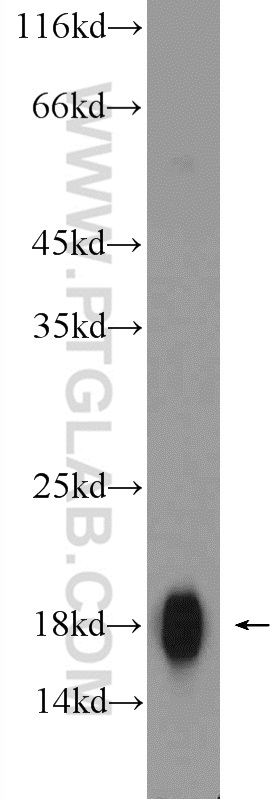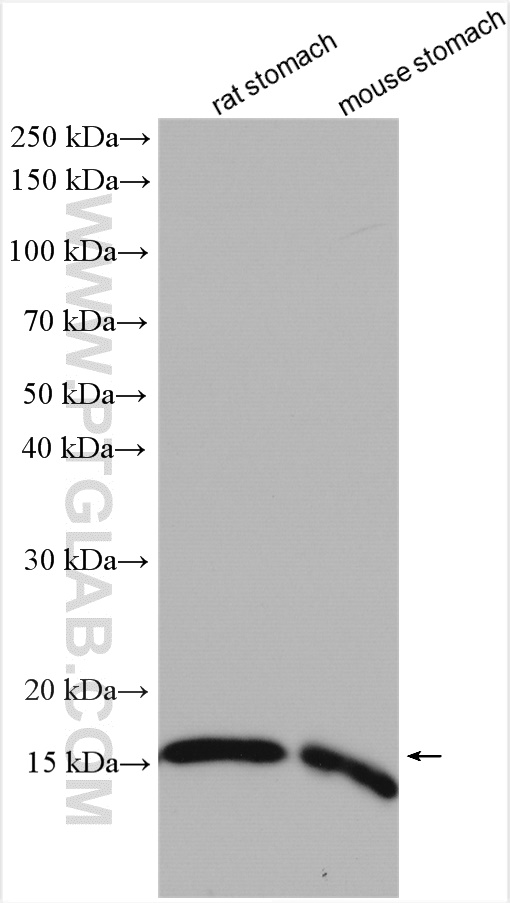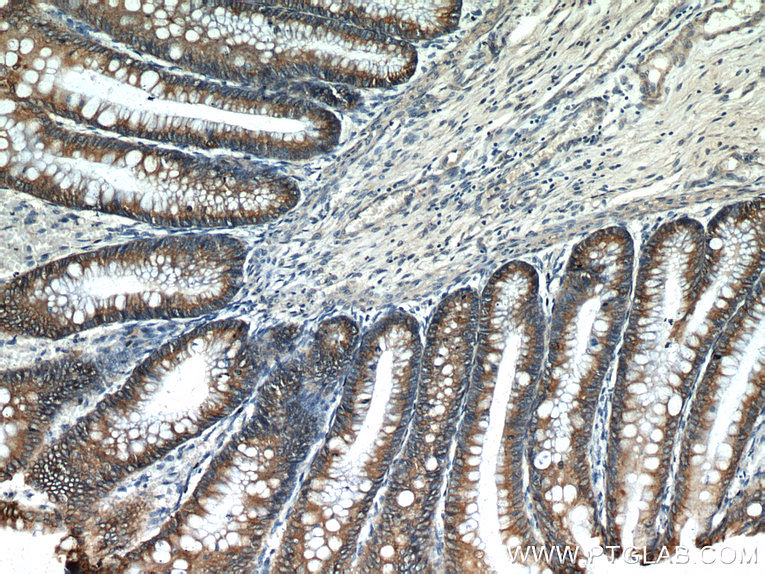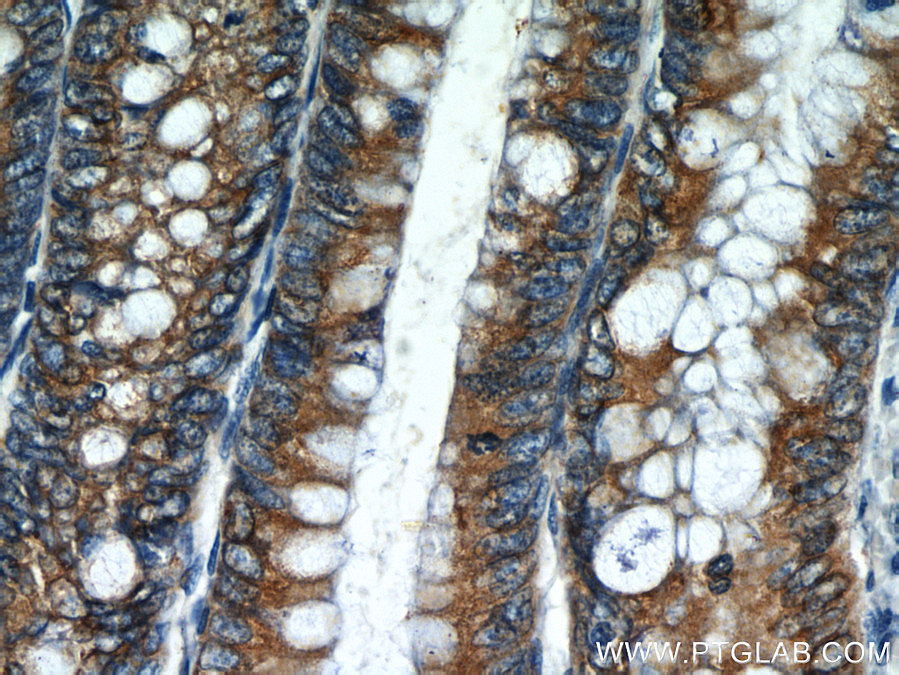验证数据展示
经过测试的应用
| Positive WB detected in | A549 cells, rat colon tissue, rat stomach tissue, mouse stomach tissue |
| Positive IP detected in | A549 cells |
| Positive IHC detected in | human breast cancer tissue, human colon tissue Note: suggested antigen retrieval with TE buffer pH 9.0; (*) Alternatively, antigen retrieval may be performed with citrate buffer pH 6.0 |
| Positive IF/ICC detected in | A549 cells |
| Positive FC (Intra) detected in | A549 cells |
推荐稀释比
| 应用 | 推荐稀释比 |
|---|---|
| Western Blot (WB) | WB : 1:500-1:2000 |
| Immunoprecipitation (IP) | IP : 0.5-4.0 ug for 1.0-3.0 mg of total protein lysate |
| Immunohistochemistry (IHC) | IHC : 1:50-1:500 |
| Immunofluorescence (IF)/ICC | IF/ICC : 1:50-1:500 |
| Flow Cytometry (FC) (INTRA) | FC (INTRA) : 0.40 ug per 10^6 cells in a 100 µl suspension |
| It is recommended that this reagent should be titrated in each testing system to obtain optimal results. | |
| Sample-dependent, Check data in validation data gallery. | |
产品信息
12275-1-AP targets AGR2 in WB, IHC, IF/ICC, FC (Intra), IP, ELISA applications and shows reactivity with human, mouse, rat samples.
| 经测试应用 | WB, IHC, IF/ICC, FC (Intra), IP, ELISA Application Description |
| 文献引用应用 | WB, IHC, IF |
| 经测试反应性 | human, mouse, rat |
| 文献引用反应性 | human, mouse, rat |
| 免疫原 | AGR2 fusion protein Ag2919 种属同源性预测 |
| 宿主/亚型 | Rabbit / IgG |
| 抗体类别 | Polyclonal |
| 产品类型 | Antibody |
| 全称 | anterior gradient homolog 2 (Xenopus laevis) |
| 别名 | GOB4, GOB 4, AGR 2, AG-2, AG2 |
| 计算分子量 | 175 aa, 20 kDa |
| 观测分子量 | 17-20 kDa |
| GenBank蛋白编号 | BC015503 |
| 基因名称 | AGR2 |
| Gene ID (NCBI) | 10551 |
| RRID | AB_2225096 |
| 偶联类型 | Unconjugated |
| 形式 | Liquid |
| 纯化方式 | Antigen affinity purification |
| UNIPROT ID | O95994 |
| 储存缓冲液 | PBS with 0.02% sodium azide and 50% glycerol , pH 7.3 |
| 储存条件 | Store at -20°C. Stable for one year after shipment. Aliquoting is unnecessary for -20oC storage. |
背景介绍
AGR2, also named AG2 or HPC8, encodes anterior gradient protein 2 homolog which belongs to the AGR family. It is a secreted protein localized in endoplasmic reticulum. AGR2 plays roles in MUC2 post-transcriptional synthesis,secretion and production of mucus by intestinal cells. AGR2 was significantly elevated in the pancreatic juice from patients with pre-malignant conditions as well as pancreatic cancer compared to control pancreatic juice samples. AGR2 levels in pancreatic juice could potentially be used in assessment of high-risk patients undergoing endoscopic procedures.
实验方案
| Product Specific Protocols | |
|---|---|
| WB protocol for AGR2 antibody 12275-1-AP | Download protocol |
| IHC protocol for AGR2 antibody 12275-1-AP | Download protocol |
| IF protocol for AGR2 antibody 12275-1-AP | Download protocol |
| IP protocol for AGR2 antibody 12275-1-AP | Download protocol |
| Standard Protocols | |
|---|---|
| Click here to view our Standard Protocols |
发表文章
| Species | Application | Title |
|---|---|---|
Nat Cell Biol Opposing Wnt signals regulate cervical squamocolumnar homeostasis and emergence of metaplasia. | ||
Nat Protoc Patient-derived and mouse endo-ectocervical organoid generation, genetic manipulation and applications to model infection. | ||
Cell Rep Med Distinctive multicellular immunosuppressive hubs confer different intervention strategies for left- and right-sided colon cancers | ||
Proc Natl Acad Sci U S A A discrete population of squamocolumnar junction cells implicated in the pathogenesis of cervical cancer. | ||
J Pathol A novel blueprint for 'top down' differentiation defines the cervical squamocolumnar junction during development, reproductive life, and neoplasia. | ||
Int J Cancer Unique recurrence patterns of cervical intraepithelial neoplasia following excision of the squamo-columnar junction. |
